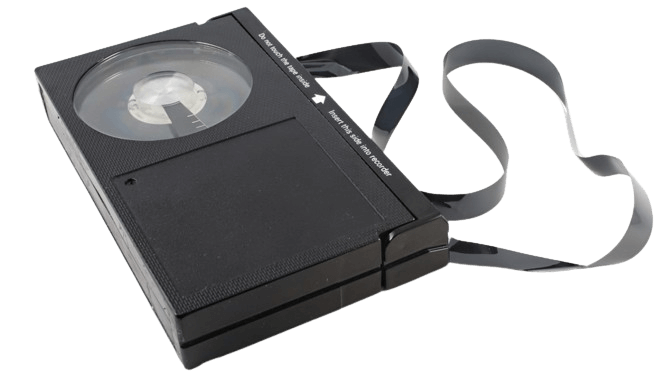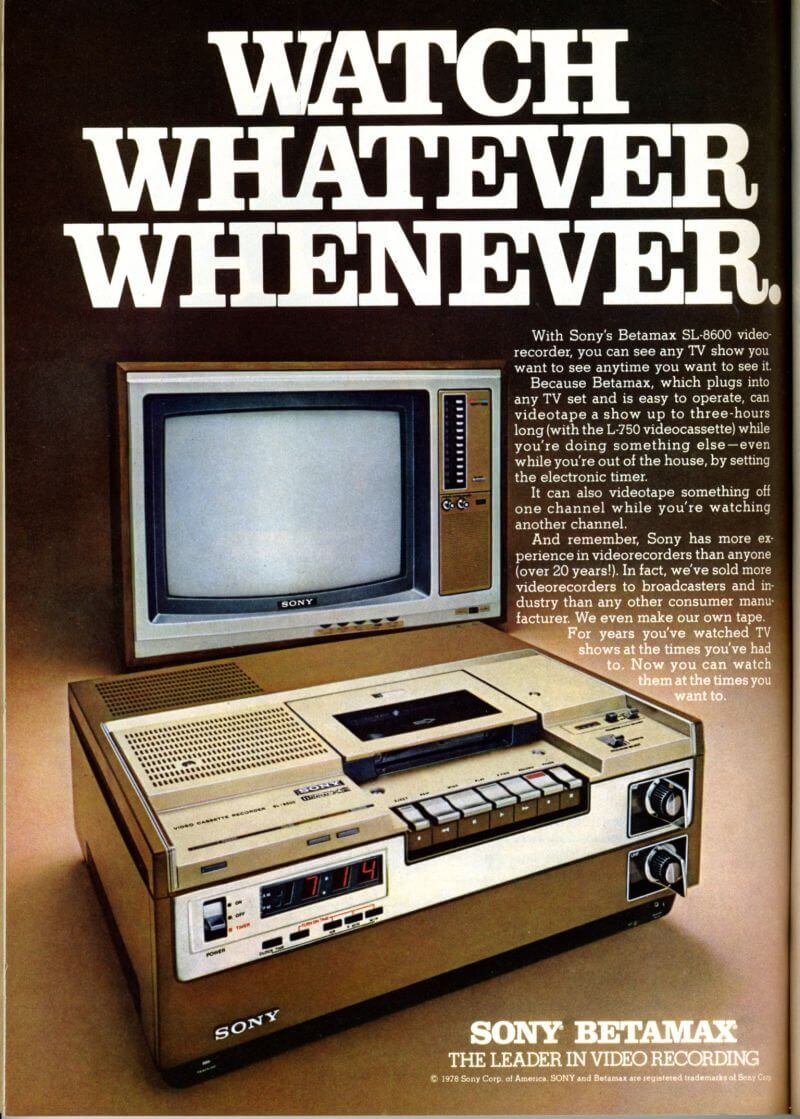The Lore of Betamax
How Sony's Betamax made YouTube and Twitch possible
When Sony announced that it would cease manufacturing Betamax tapes and close the last remaining factories in March 2016, those news came as a shock to the technology world, mostly because everyone thought this had already happened. Sony hasn't built new Betamax players since 2002, and while the hardware had a reputation for being more durable than its VHS counterpart, Betamax hasn't been a viable standard for nearly 30 years. The world is full of obsolete technologies still playing a role in niche fields (the US military still runs nuclear silos off 8-inch floppy discs), but Betamax's loss to the competing VHS format made it the butt of jokes decades ago. But its legacy goes far beyond that, and leads directly to today's top online streaming services like YouTube and Twitch.

Betamax wasn't better on all fronts
It's easy to look back from the 21st century and dismiss both VHS and Betamax as antiquated has beens, but the video format wars of the 1970s and 1980s actually have deep ties to the modern era. Engineers and researchers had been working for decades to create a cheap mechanism that allowed consumers to view content in their own homes or record television programs to watch later. The well known Betamax vs. VHS war is typically summarized as "Betamax had higher quality but VHS was cheaper", but this isn't actually true. While Betamax did offer some technical advantages over VHS, they weren't particularly visible on typical TV sets of the mid 1970s and early 1980s.
The price argument is difficult to quantify - Betamax launched at higher prices while Sony held a monopoly on the market, but research indicates that the company slashed prices on its hardware once VHS began to gain steam. Companies in the 1970s were well aware of the importance of competing on price and most sources agree that Betamax hardware was cheaper than its VHS equivalent by the early to mid 1980s. Sony was also first to market with a handheld camcorder (the so-called Betamovie,) but the Betamovie was record-only - it couldn't play content back or copy the footage to a second VCR.
Capacity, not cost, is what killed Betamax. When the format debuted, it could only record 60 minutes of programming compared with two hours for JVC's VCR technology, which launched in 1975. Sony didn't think this would be a problem, and emphasized Betamax's quality, durability, and time shifting capabilities in their advertising, as shown below:

JVC, on the other hand, saw the VCR primarily as a means of selling movies to consumers and began partnering with studios and distributors to drive home the idea of the VCR as a means for studios to expand revenue and open new marketing opportunities. VHS tapes were physically larger than their Betamax equivalents, which meant they could hold more tape for recording (250 meters vs. 150 meters). VHS also had a slightly slower tape speed - 1.3 inches/second VCR's debuted at two hour record times and were up to four hours (the length of a broadcast football game) by 1977. This made it difficult for Sony to match the recording times, though the company did introduce a two hour BII format by the end of 1977.

From the beginning, Sony had marketed Betamax towards discerning videophiles and content creators and the company launched a number of high-end features it hoped would finally put the nail in VHS's coffin and give it a technological edge. The "edge" that Betamax held over VHS, in other words, wasn't a static element that Sony defined in 1974 and remained constant thereafter - Sony continuously iterated on the Betamax design, improving quality, adding recording modes, and responding to consumer interests. The problem, however, is that it was often slower to respond than its rivals to emerging trends, while its technological advantages were often duplicated in short order. VHS had massive economies of scale on its side as early as 1980, and those advantages continued to stack over time. A full and fascinating write-up of the events and history of Betamax and the format wars is available at betainfoguide.net.
How the video format wars reverberate today
Betamax may be long dead as a storage format, but the Supreme Court case surrounding it lives on. In 1976, Universal and Disney sued Sony (Sony Corp. of America v. Universal City Studios, Inc, et al) alleging that because Betamax's primary purpose was to record and timeshift content, Sony should be held liable for copyright infringements committed by Betamax owners. The case went to the Supreme Court, which was initially inclined to decide against Sony, and rule in favor of Disney and Universal. Ultimately, the court ruled in Sony's favor, because the right of home users to make a personal copy of a public broadcast established that the Betamax console (and by extension, the VCR) had legitimate non-infringing uses.
The Court's majority opinion states:
"[There must be] a balance between a copyright holder's legitimate demand for effective - not merely symbolic - protection of the statutory monopoly, and the rights of others freely to engage in substantially unrelated areas of commerce. Accordingly, the sale of copying equipment, like the sale of other articles of commerce, does not constitute contributory infringement if the product is widely used for legitimate, unobjectionable purposes. Indeed, it need merely be capable of substantial noninfringing uses... The question is thus whether the Betamax is capable of commercially significant noninfringing uses... one potential use of the Betamax plainly satisfies this standard, however it is understood: private, noncommercial time-shifting in the home. It does so both (A) because respondents have no right to prevent other copyright holders from authorizing it for their programs, and (B) because the District Court's factual findings reveal that even the unauthorized home time-shifting of respondent's programs is legitimate fair use..."
Notable TV personality Mr. Rogers testified in favor of allowing VCRs, and his testimony was considered evidence that not all TV producers were opposed to content recording for playback at a later date.
The so-called "Betamax Case" established that a business that offered substantial non-infringing uses for a product could not be held criminally liable for infringement simply because others used the equipment for illegal purposes. This same principle underlies the DMCA's "safe harbor" provision. It's why copyright holders have generally been forced to work with companies like YouTube and Twitch as opposed to crushing them. While the case has its limits - the rules it established have not generally protected file-sharing sites - it still set an incredibly important precedent for the limits to copyright and the concept of fair use.
From this perspective, the video format wars of the 1970s and 1980s were a mere skirmish. Betamax won the war where it counted.
Text by Joel Hruska.
Source: extremetech.com.